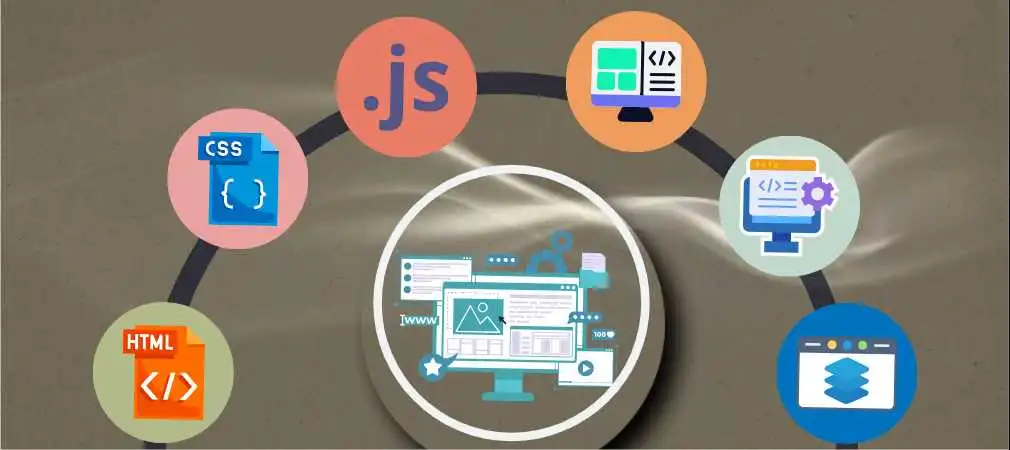Blogs
The journey from HTML to Full Stack: A Roadmap for Beginners
Introduction

In the expanding domain of web development, every journey begins with a profound understanding of the basics- fundamental principles that underpin its architecture. Such is the case from the transition from HTML to mastery of full-stack development. This comprehensive roadmap is tailored for beginners, to help them navigate the basics and challenges of web development areas. We help aspiring developers in equipping the essential knowledge and skills required to navigate the path from HTML basics to full-stack expertise.
This journey begins with a focus on mastering fundamental elements of web development: HTML, CSS, and JAVASCRIPT. These pillars serve as the foundation upon which we’ll build our understanding and expertise. So, with determination and a thirst for knowledge, let’s embark on a transformative journey together- where every step brings us closer to full stack mastery.
Understanding the basics
Before delving into the complexities of full-stack development, it's essential to grasp the foundational elements that underpin the web. HTML, CSS and JavaScript serve as the cornerstone of web development, each playing a vital role in shaping the digital landscape.
Hypertext markup language or HTML provides the structural framework upon which web content is built, defining the hierarchy and organisation of information.
CSS or Cascading style sheets, is the language used to style HTML elements allowing developers to customise the appearance and layout of the webpages.
Javascript, the active force behind modern web development, encourages interactivity and responsiveness, empowering developers to create a dynamic force and engaging user experience.
By understanding these building blocks of full stack development, developers lay a solid foundation toward web development, equipped with the knowledge and skills necessary to understand full stack with confidence and expertise.
Delving into front-end development
Once the foundational elements of HTML, CSS, and Javascript have been mastered, aspiring developers can transition into Front-end development. Front-end development focuses on creating visually appealing active user interfaces that enhance the overall user experience. This phase involves diving deeper into various technologies and frameworks that empower developers to bring their designs to life. This phase involves mastering the key technologies such as responsive design for optimal display across various devices, version control systems like Git for efficient collaborations, CSS preprocessors like Sass for enhanced styling capabilities, and javascript frameworks such as React and vue.js for building dynamic applications. By honing these skills, developers can create a compelling user experience that elevates the functionality and aesthetics of web projects.
Venturing into backend development
Transitioning into the backend is a critical step in the journey towards full-stack proficiency. It involves server-side scripting, database management, API development, server configuration and security practices. Backend developers use languages like javascript(node.js), python (Django and Flask), Ruby( Ruby on Rails), and Java(Spring Boot) to build the logic and infrastructure powering web applications. They work with databases such as MySQL, PostgreSQL, or MongoDB to store and manage data efficiently. API development is crucial, as developers design RESTful APIs to expose backend functionality to frontend applications. Equipping security with encryption, input validation and authentication mechanisms like JWT and OAuth is essential. Mastering back-end development equips developers to make resilient and high-performing web- applications.
Integrating front-end and back-end
Integrating front-end and back-end components is pivotal for creating cohesive web applications. Front end technologies like HTML, CSS, and Javascript communicate with backend frameworks such as Node.js, Django or Spring Boot through API’s. This communication allows data exchange, user authentication and seamless interaction between the user interface and server side logic, by coordinating these components effectively, developers ensure that web- applications deliver a unified and immersive user-experience while effectively handling data processing and management tasks.
Continuous improvement and specialisation
In the journey towards full-stack mastery, continuous improvement and specialisation are indispensable. As technology evolves, developers must stay up-to-date to the latest trends, tools and best practices through ongoing learning and professional development. Specialising in specific areas of interests, such as frontend development and backend development, or DevOps allows developers to deepen their expertise and make meaningful contributions to projects. By actively seeking out new challenges, building practical experience through projects and collaborating with peers, developers can elevate their skills, stay competitive in the job market and drive innovation in the ever-evolving field of web-development.
Networking and job search
Networking and job search are important aspects of establishing a successful career in web development. Actively participating in industry events, meetups and online communities help developers build a strong professional network. Maintaining a presence on platforms like Linkedin and GitHub, allows for showcasing skills and attracting job opportunities. When searching for jobs, tailoring resumes and portfolios, applying for relevant postings and leveraging personal connections can lead to valuable opportunities.Combining networking efforts with a proactive job search approach enhances the chances of securing fulfilling roles in the ever-evolving field of web- development.
Conclusion
The journey from HTML to full stack is an exciting and transformative. By mastering the basics of HTML,CSS, Javascript and delving into frontend and backend development, beginners establish a stronger foundation. Integrating Front-end and back-end ensures cohesive web applications, while continuous improvement and specialisation empower developers to stay competitive. Networking and effective job searching play vitol roles in launching successful careers.© 2025 LEJHRO. All Rights Reserved.
